The Seal Hunters' Settlement in Rzucewo: Your Journey to the Stone Age
- Damian Brzeski

- Aug 15
- 9 min read
Feel the same sand beneath your feet that seal hunters trod 5,000 years ago. Listen to the roar of the waves of the Bay of Puck, which has told the story of this place for centuries.
On the picturesque Rzucewo Headland, an extraordinary journey back to the Stone Age awaits you at the Seal Hunters' Settlement Cultural Park. Here, in Kashubia, prehistory is at your fingertips.
This is where one of the most important Neolithic settlements in northern Poland was discovered. Today, thanks to the passion of archaeologists and the support of the local community, you can stroll among the reconstructed huts, peer into an ancient grave, and literally touch history.
It is not only an archaeological monument, but above all a fascinating adventure and a living open-air museum waiting for you by the Kashubian seaside.

What is the Seal Hunters' Settlement Cultural Park?
Wondering what this extraordinary place is? The Seal Hunters' Settlement Cultural Park is both an in-situ archaeological reserve and a living, open-air educational museum .
This means that you are on the authentic site of an ancient Stone Age settlement, dating back to the turn of the 3rd and 2nd millennium BC, which belonged to the so-called Rzucewo culture .
Everything you see was created at the site of the original discoveries, making the experience incredibly authentic.
Since its opening in 2013, the park has become one of the biggest tourist attractions in the Puck area. Here you'll find permanent exhibitions in a historic cottage, an outdoor nature trail with reconstructions, and various workshops and events.
The park's mission is not only to protect the priceless archaeological site, but also to revive the "cultural landscape" – showing you how this ancient settlement fits into the nature and traditions of Kashubia.
The Seal Hunters' Settlement is a bridge connecting the distant past with the present, engaging both tourists and the local community.

How was the cultural park in Rzucewo created?
The idea of creating a park in Rzucewo arose from the need to protect a valuable archaeological site. In 2008, thanks to the efforts of the Puck Municipality and a team of archaeologists led by Danuta Król, the "Seal Hunters' Settlement" Cultural Park was formally established.
Crucially, from the outset, minimal disruption to the natural coastal landscape was planned. Therefore, all the reconstructions you'll see are located exactly where their original remains were discovered during excavations.
Construction began in full swing after obtaining EU funds, and the official opening took place on June 26, 2013. Since then, the place has been fulfilling its mission: protecting the cultural landscape and popularizing the region's prehistory in an accessible way.
The content is overseen by archaeologists from the Archaeological Museum in Gdańsk and administered by the Puck Commune's Centre for Culture, Sports, and Tourism. This ensures that the content presented here is reliable and engaging.

Your hike "On the Trail of the Seal Hunters"
One of the Settlement's greatest attractions is the outdoor educational trail "On the Seal Hunters' Trail," which leads you through the forest on the Rzucewo Headland. Walking along it, you'll take a true journey back in time, and at each stop, you'll imagine life thousands of years ago.
Most importantly, as you walk through the forest, you are literally walking in the footsteps of ancient seal hunters , and information boards explain the significance of each object.
The trail begins at a Kashubian cottage. Along the way, you'll see reconstructed pottery kilns, stonework workshops, and ancient dwellings: a pole hut , a semi-dugout , and a mysterious shaman's hut .
As you delve deeper into the forest, an atmosphere of mystery surrounds you. You'll feel the thrill of standing in a place where, thousands of years ago, an entire settlement bustled with life.
The trail culminates in a clifftop viewing platform offering a beautiful panorama of the Bay of Puck. It's a view that reminds us why it was the sea that first drew people here centuries ago.
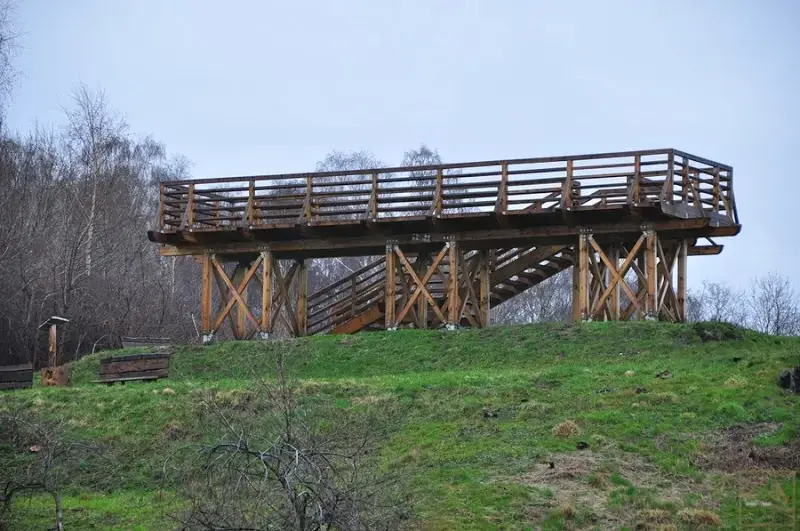
Permanent exhibitions at the Kashubian Cottage
The heart of the park is the reconstructed Kashubian Cottage , which houses a small but uniquely atmospheric museum. Two permanent exhibitions await you there.
The first, "Rzucewo in the Stone Age," showcases original artifacts discovered at the settlement. In the display cases, you'll admire pottery fragments, flint arrowheads, stone axes, and unique amber jewelry.
A life-size stuffed seal also attracts attention, reminding us how important these mammals were to the ancient inhabitants.
The second exhibition, "Archaeological Objects in the Kashubian Landscape," explores the prehistory of the entire region. You'll understand that the settlement in Rzucewo was not an isolated island, but part of the rich heritage of Pomerania. You'll see how Kashubia is teeming with archaeological treasures , which remain hidden in its forests and underground to this day.
The two exhibitions complement each other perfectly. First, you'll experience the world of seal hunters "from the inside," and then you'll see the world around them . All this in a setting that combines modern presentation with the rustic charm of an old Kashubian cottage.
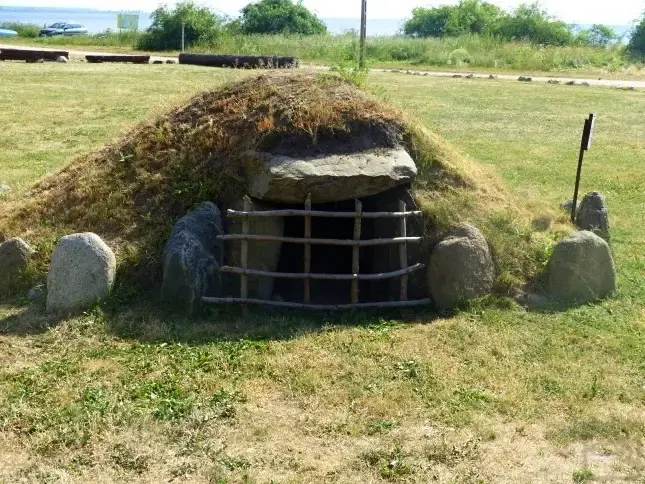
The heritage of the Rzucewo culture
To fully understand this place, you need to learn about both its ancient creators and the people who brought their memory back to the modern world.
Who were the people of the Rzucewo culture?
The name of the town gives rise to the term Rzucewo culture , which archaeologists use to describe a unique community from the period 2500–1700 BC. Its uniqueness lay in its economic specialization related to the sea.
These people not only farmed and raised animals, but also specialized in fishing and seal hunting . They were also masters of amber crafting , creating jewelry that became a valuable trade commodity.
This culture left behind characteristic products: stone axes , cups with an S-shaped profile and bowls decorated with rope impressions.
The archaeological significance of the Rzucewo culture is enormous – it is the key to understanding how humans adapted to the marine environment on the southern coast of the Baltic Sea.
The Cultural Park in Rzucewo is essentially a "museum of Rzucewo culture", where you can see its heritage with your own eyes.
The role of the Archaeological Museum in Gdańsk
The history of archaeological research in Rzucewo dates back to the 19th century, but it is the Archaeological Museum in Gdańsk that has been conducting systematic excavations here since the 1980s.
It is thanks to the efforts of its employees, and especially the many years of research led by Danuta Król, that most of the known facts about the lives of seal hunters have been discovered and interpreted.
The museum also played a key role in establishing the cultural park, and today it oversees it, ensuring that the exhibitions are in line with the latest research.
Danuta Król – the “godmother” of the settlement
When discussing the discoveries at Rzucewo, you must meet Danuta Król – an archaeologist who has devoted her entire professional career to this site. She led the excavations for decades and was a key advocate for opening the settlement to visitors.
It's safe to say she's the "godmother" of the Seal Hunters' Settlement . Her passion and determination transformed Rzucewo from a mere textbook entry into a living story accessible to everyone.
If you ever visit Osada and meet a friendly archaeologist who tells you about every stone of this place, it will most likely be Danuta Król.

Reconstructions in the heart of the forest
Walking along the forest path, you will come across faithfully recreated objects that will allow you to peer into the world of daily activities, crafts and spirituality of the ancient inhabitants.
A pole hut, a half-dugout and a shaman's hut
The most spectacular feature of the settlement is the reconstruction of prehistoric dwellings . Here, you'll see what shelters from thousands of years ago might have looked like.
A pole hut is a model of an above-ground house with a wooden frame, plastered with clay, and a thatched roof. Peek inside through the low opening and you'll get a sense of the harsh conditions our ancestors lived in.
A semi-dugout hut was a hut partially sunk into the ground, providing protection from wind and cold. Its roof of turf and branches made it almost blend in with the forest surroundings.
"The Shaman's Hut" – the most intriguing reconstruction of a small hut that may have been a place of worship or the dwelling of someone with magical powers. It symbolizes the sphere of beliefs and magic in the settlement.
A craftsman's workshop and an ancient grave
On the path you will also come across a reconstruction of a pottery kiln and a stone axe processing workshop .
You'll discover that the settlement was an organized community with highly developed crafts. You'll see how pottery was made and fired, and how tools essential for hunting and the construction of dugout canoes were produced.
A special feature is the reconstruction of a Stone Age grave . It is presented as a small earth mound, inside which is a replica of a skeleton placed in a contracted position, along with grave goods.
This is moving evidence of the existence of funeral rituals and belief in the afterlife 4,500 years ago.
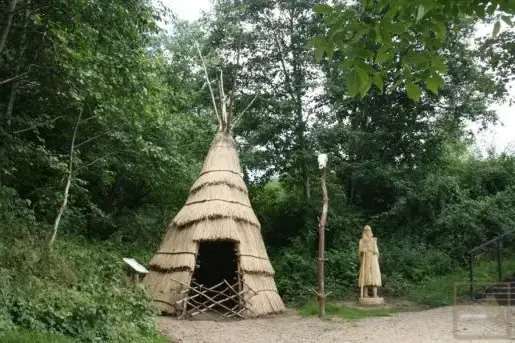
Chata Kashubska – Your Education Center
This reconstructed building is the heart of the entire complex. It serves a dual, crucial role, combining the functions of a museum and a living workshop center.
Archaeology meets ethnography
The park's focal point is the Kashubian Cottage , a beautiful reconstruction of an 18th-century farmhouse. Inside, archaeological artifacts intertwine with ethnographic elements, such as a Kashubian spinning wheel and decorated chests.
This deliberate effort demonstrates cultural continuity —from ancient seal hunters to Kashubian fishermen and farmers. The cottage also houses a multimedia room and a workshop where educational activities are held.
Importance in regional education
The Kashubian Cottage plays a key role in regional education . Numerous workshops for children and young people are held here, such as "Little Archaeologist" and "Pottery Basics."
Through play and practical activities, participants learn about the history of their "small homeland," which builds local identity and pride. It's a place where living culture meets ancient culture , creating a comprehensive and unforgettable experience.
Attractions and activities for you
The Seal Hunters' Settlement is a place where history is at your fingertips. Instead of passive sightseeing, you can actively participate in discovering the past.
"Little Archaeologist" and "Pottery Basics" workshops
The park offers a number of interactive workshops that will allow you to spend your time actively.
During the "Little Archaeologist" workshop , you'll become a researcher of the past. Equipped with professional tools, you'll be able to unearth "artifacts" hidden in the sand and experience the thrill of a true explorer.
During this basic pottery workshop , you'll handcraft a clay vessel using techniques dating back thousands of years. It's a great opportunity to appreciate the skill of ancient craftsmen and create a unique souvenir.
Active guided walk and "Sobótka" festival
You can also take an active walk with a guide who will tell you the secrets of the settlement in a colorful and engaging way. This is much more than just a simple tour – it's an interactive journey through time, full of puzzles and curiosities.
If you visit Rzucewo in June, be sure to attend the annual "Sobótka u Łowców Seok" festival. This unique event combines traditional Kashubian Midsummer's Eve rituals with an archaeological picnic.
You'll enjoy demonstrations of ancient crafts, competitions (like javelin throwing), wreath-throwing, and jumping over a huge bonfire. It's an unforgettable night full of magic, dance, and history.
Rzucewo and the surrounding area – your tourist destination
A visit to the Seal Hunters' Settlement is an excellent opportunity to discover other treasures hidden in Rzucewo and its picturesque surroundings.
The Bay of Puck – the heart of the settlement
The location of Rzucewo on the Bay of Puck was crucial for the ancient settlers – it was an inexhaustible pantry for them.
Today, its picturesque landscape, protected as part of the Coastal Landscape Park , is an integral part of your experience.
Be sure to climb to the viewing platform on the cliff – the panorama of the bay is breathtaking!
The tower is planned to be rebuilt in 2025.
The new, taller structure, called the "stolem" structure , will provide even more spectacular views.
On the Trail of the Wanderer and the History Around You
The blue-marked Kępa Pucka Edge Trail and the international E9 European Long-Distance Trail run through Rzucewo. You can combine a visit to the settlement with a longer hike or bike ride along the picturesque coast.
Right next to the park stands the neo-Gothic Rzucewo Castle , known as Jan III Sobieski Castle. Today, it houses a hotel and restaurant.
You can stroll through its historic park and end your visit with a delicious lunch overlooking the bay. The combination of an ancient settlement and a romantic palace in one place creates a unique atmosphere.
The entire heritage is looked after by the Puck Commune , which provides an exemplary example of how to care for the treasures of the past and promote them for the benefit of residents and tourists.
Rzucewo is waiting to tell its story. Come and let yourself be captivated by this extraordinary journey through time!


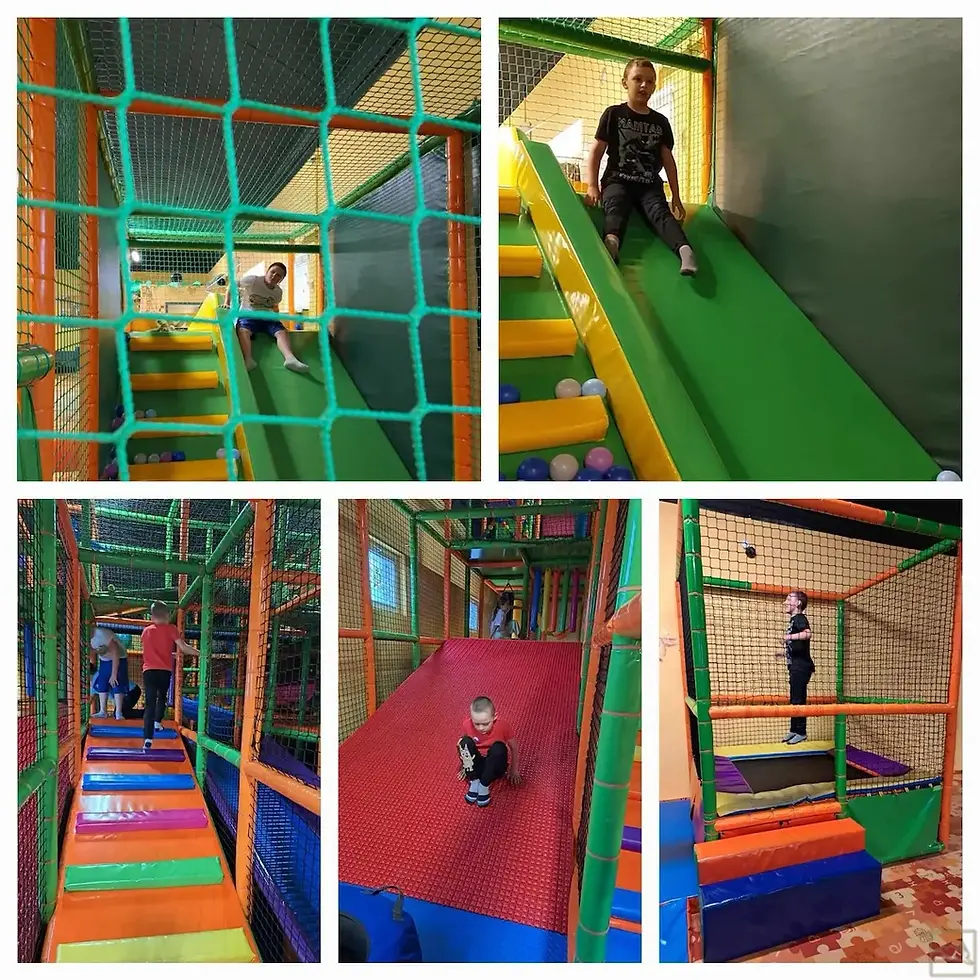
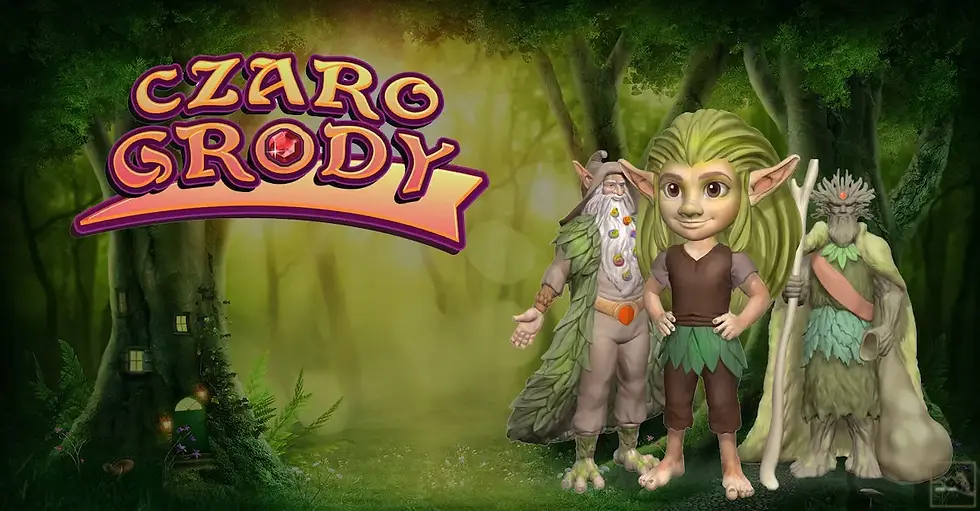




























































Comments